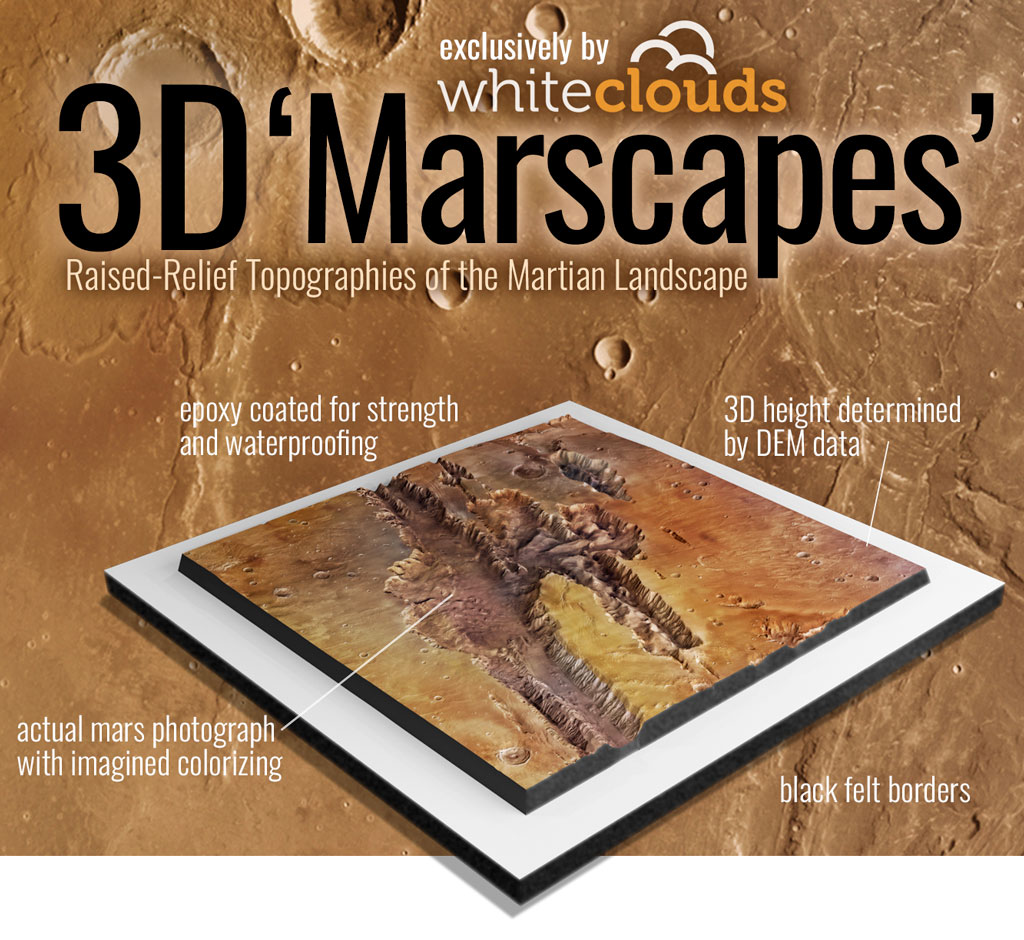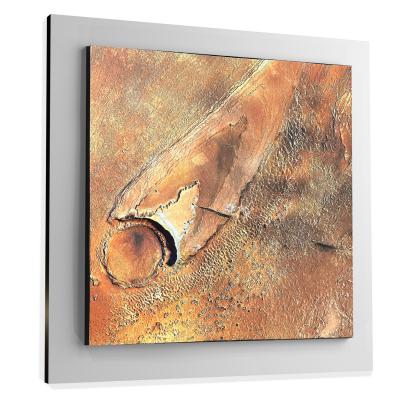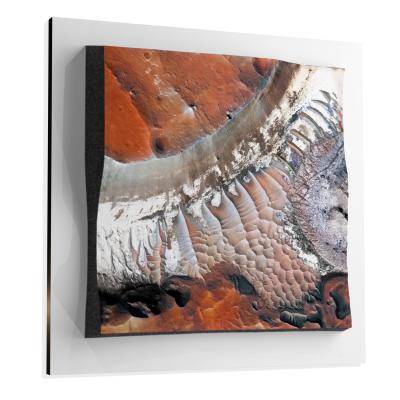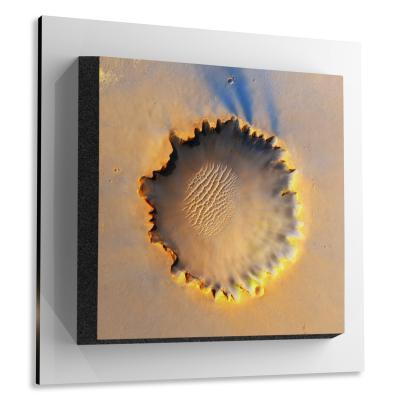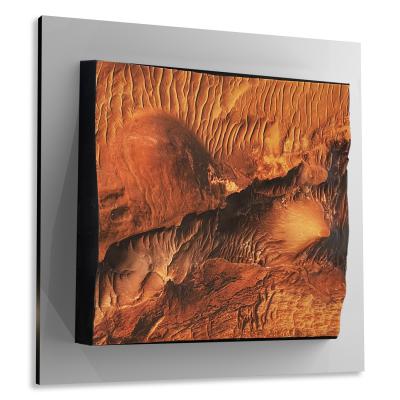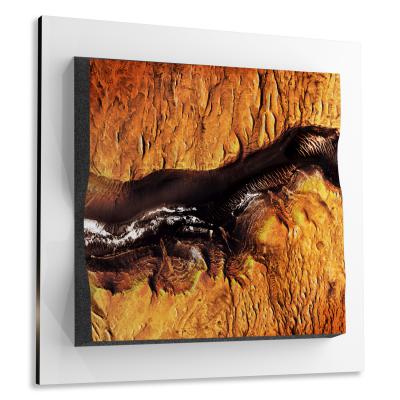Southern Highlands
Southern Highlands
We Build Custom 8K Mars Canvas Prints of Southern Highlands
Did you know we make
custom
8K Mars Canvas Prints

and
3D Marscapes

Southern Highlands
The Southern Highlands of Mars offer a unique window into the geological and climatic history of the Red Planet. As one of the oldest terrains on Mars, this region holds the key to understanding various aspects of planetary evolution, from its geology to possible past water activity and even potential habitability. With its rich assortment of impact craters, ancient river valleys, and intriguing mineral compositions, the Southern Highlands continue to be a focal point for numerous scientific investigations.
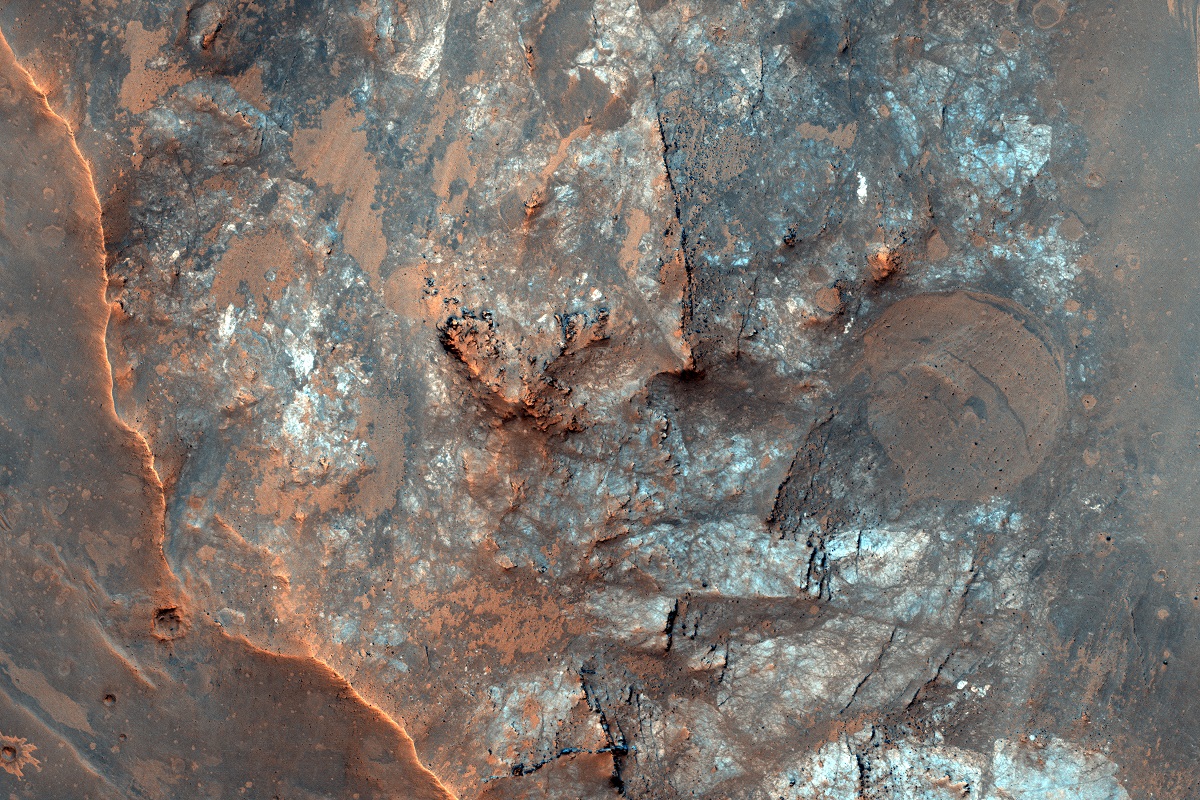 Impact Crater in the Southern Highlands
Impact Crater in the Southern Highlands
Geographical Location
The Southern Highlands of Mars represent a vast and intricate geographical canvas that extends across the southern half of the planet. Specifically, the region stretches latitudinally from approximately 30 degrees South to 60 degrees South and spans a wide range of longitudes, making it one of the largest continuous geological formations on Mars. Notably, it stands at a significantly higher elevation compared to the adjacent Northern Lowlands, with altitude differences sometimes exceeding several kilometers. This elevation gradient adds a vertical dimension to its geographical complexity. Within this expansive zone, the topographical variations are extensive, featuring an abundance of impact craters, towering mountain ranges, and expansive plateaus interspersed with deep canyons. The Southern Highlands are adjacent to the Northern Lowlands, and the two are separated by a transitional boundary characterized by a chaotic mix of terrains and steep escarpments. This transitional zone further adds layers of complexity to the region’s geographical features. Given its massive spatial extent and varied topography, the Southern Highlands serve as a treasure trove for multiple geological settings, making it an enticing focus for scientific investigations aimed at understanding Mars’ geological and possibly even biological history.
Advertisement
Sample Marscapes
Geological Composition
The Southern Highlands stand as a complex geological tapestry that records Mars’ long and tumultuous history. The crust is predominantly comprised of ancient terrains, heavily marked by impact craters that date back to the Noachian period, which spans approximately from 4.1 to 3.7 billion years ago. These primordial landscapes host an eclectic mix of rock types, including but not limited to basalts and metamorphic rocks that have undergone transformations due to heat and pressure over eons. Beyond this, spectroscopic data have unveiled a mineralogical potpourri, featuring clays, sulfates, and the intriguing possibility of carbonates, which collectively point towards a history of aqueous alteration. Additionally, the discovery of anorthosite—a rock primarily composed of feldspar—suggests significant revelations about the formation and differentiation of the Martian crust. The multiplicity of geological elements coexisting in this area paints a multifaceted picture of Mars’ past, encapsulating epochs of volcanic eruptions, asteroid and comet impacts, and potentially, periods of water flow and lake formation.
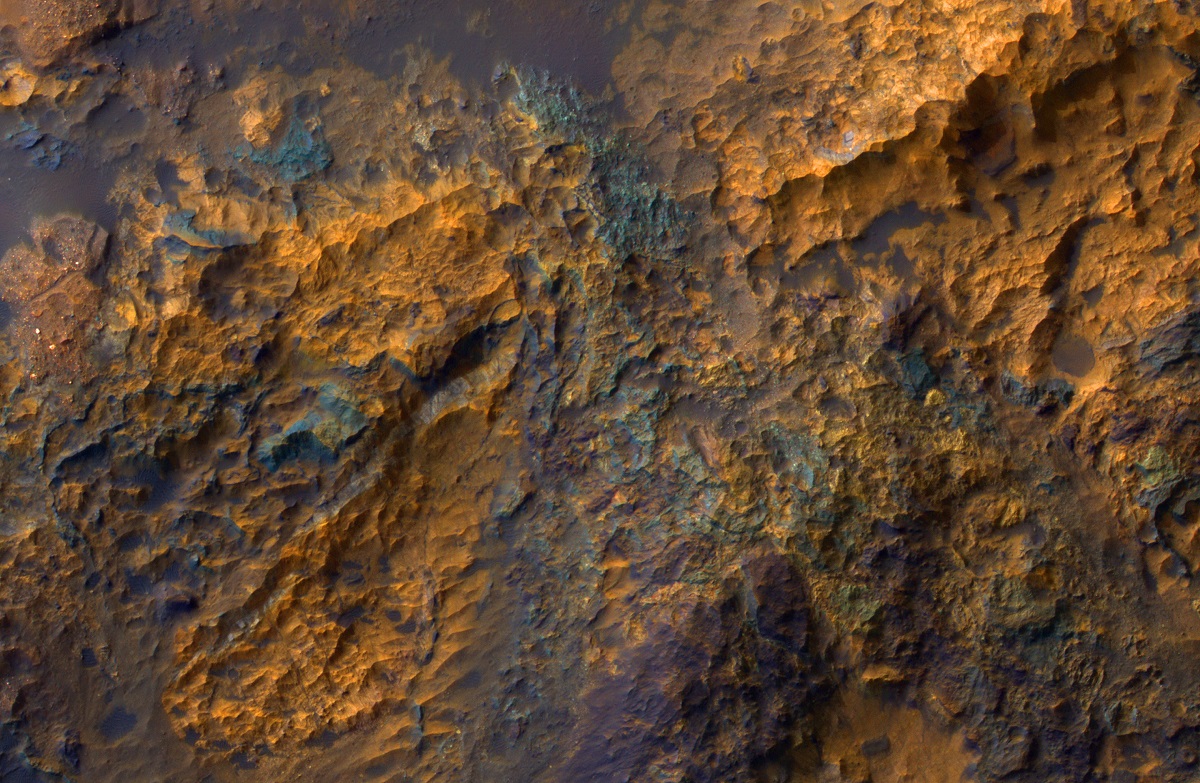 Luki Crater in the Southern highlands
Luki Crater in the Southern highlands
Significant Discoveries
Ancient River Valleys
One of the most extraordinary findings within the Southern Highlands is the intricate network of ancient river valleys that meander across the surface. These fossilized channels point to a Martian past where liquid water once flowed freely, potentially offering habitats conducive to life, if life ever existed there.
Impact Cratering
The region serves as a living museum of impact cratering, with examples covering a broad spectrum of sizes, morphologies, and preservation states. Some of the craters display unique features like central uplifts or terraced walls, and others exhibit complex layered ejecta patterns, which provide vital clues into both the nature of the impacting bodies and the subsurface geology of the region.
Mineral Diversity
A panoply of minerals, including clays, sulfates, and potentially carbonates, has been identified, amplifying the dialogue surrounding Mars’ astrobiological potential. These minerals are considered strong indicators of past aqueous activity, offering tantalizing hints at the possibility of life, at least at some point in the planet’s history.
Scientific Missions
Mars Reconnaissance Orbiter (MRO)
The Mars Reconnaissance Orbiter has served as an invaluable tool in dissecting the intricate geological anatomy of the Southern Highlands. Through high-resolution imaging and comprehensive spectral analyses, MRO has offered groundbreaking insights into the region’s geology and mineralogy.
Mars Odyssey
NASA’s Mars Odyssey spacecraft has extended our understanding of the Southern Highlands through its thermal emission imaging system, offering a different perspective on the region’s mineralogical composition and providing valuable data for identifying geological processes.
Viking Orbiters
The Viking 1 and Viking 2 missions of the late 1970s pioneered the remote sensing of Mars and were among the first to provide high-resolution imagery of the Southern Highlands, serving as the foundation for all subsequent research initiatives targeted at this region.
Geomorphological Features
The Southern Highlands boast an exceptionally rich geomorphological tapestry. It is densely populated by impact craters, ranging from fresh, sharply defined structures to ancient, eroded formations. These craters offer an unparalleled look into the processes behind impact events and the Martian subsurface. Additionally, the aged river valleys, often covered by millennia of sediment, provide fascinating venues for studying the erosional and depositional forces that have sculpted the Martian landscape over geological time frames. Intriguingly, certain sections of the Southern Highlands display evidence of glacial and periglacial activity, which are not only geologically intriguing but also have potential implications for understanding the climatic history of Mars.
The Southern Highlands of Mars serve as an open book, narrating a complex tale of the planet’s geological and possibly climatic history. With their diverse mineral composition, intricate network of ancient river valleys, and myriad impact craters, the Southern Highlands remain an essential locale for ongoing and future scientific missions. The data derived from these investigations will not only expand our understanding of Mars but also fuel our quest to determine the planet’s habitability and potential to support life, either in the past or perhaps even in the future.
Check out our 3D Mars Learning Center for more information on Mars and the Southern Highlands. You can also learn more at: NASA Mars Exploration.
More About Mars
Contact us today to learn more about our 3D services and how we can help you achieve your goals.
